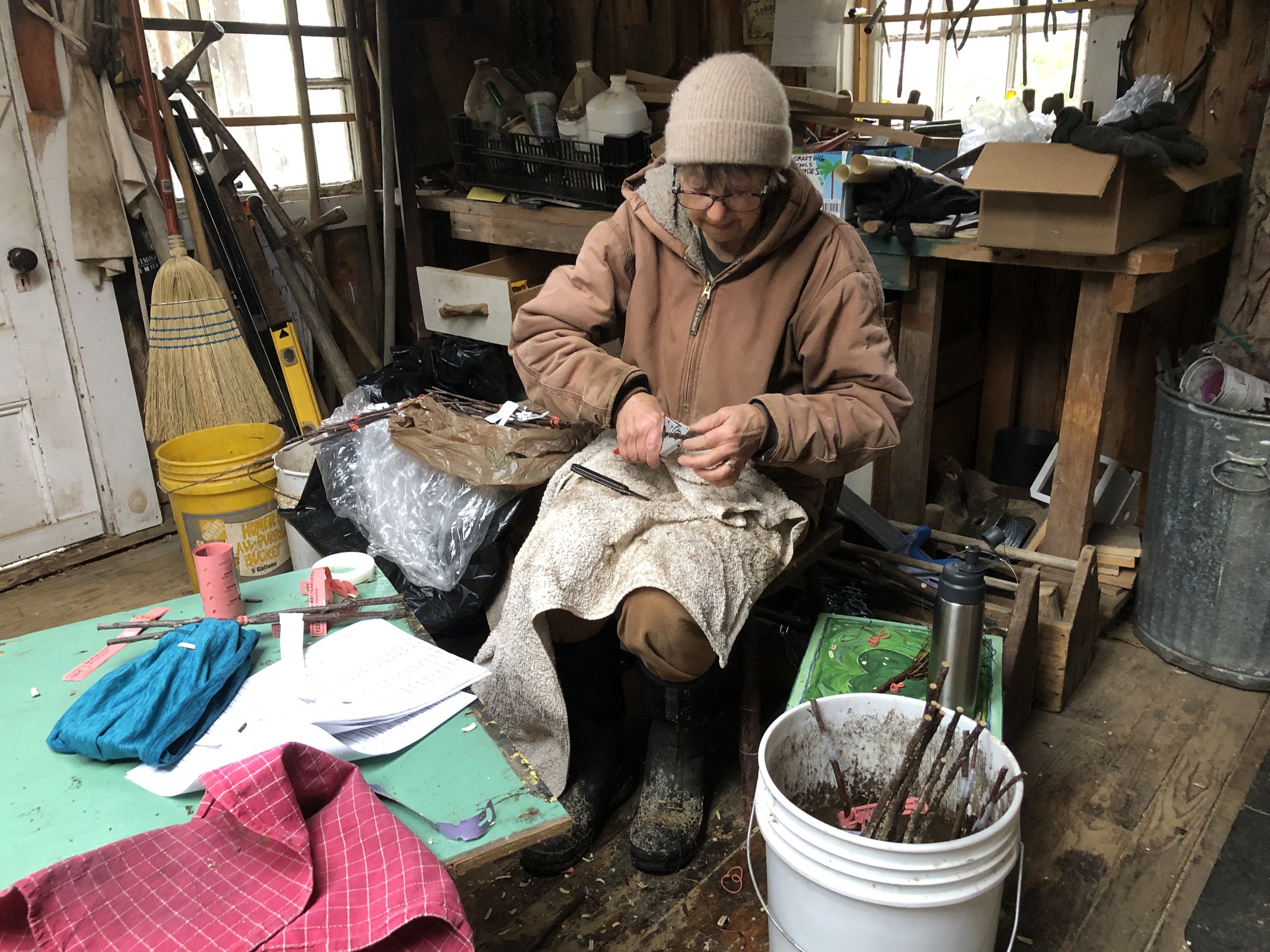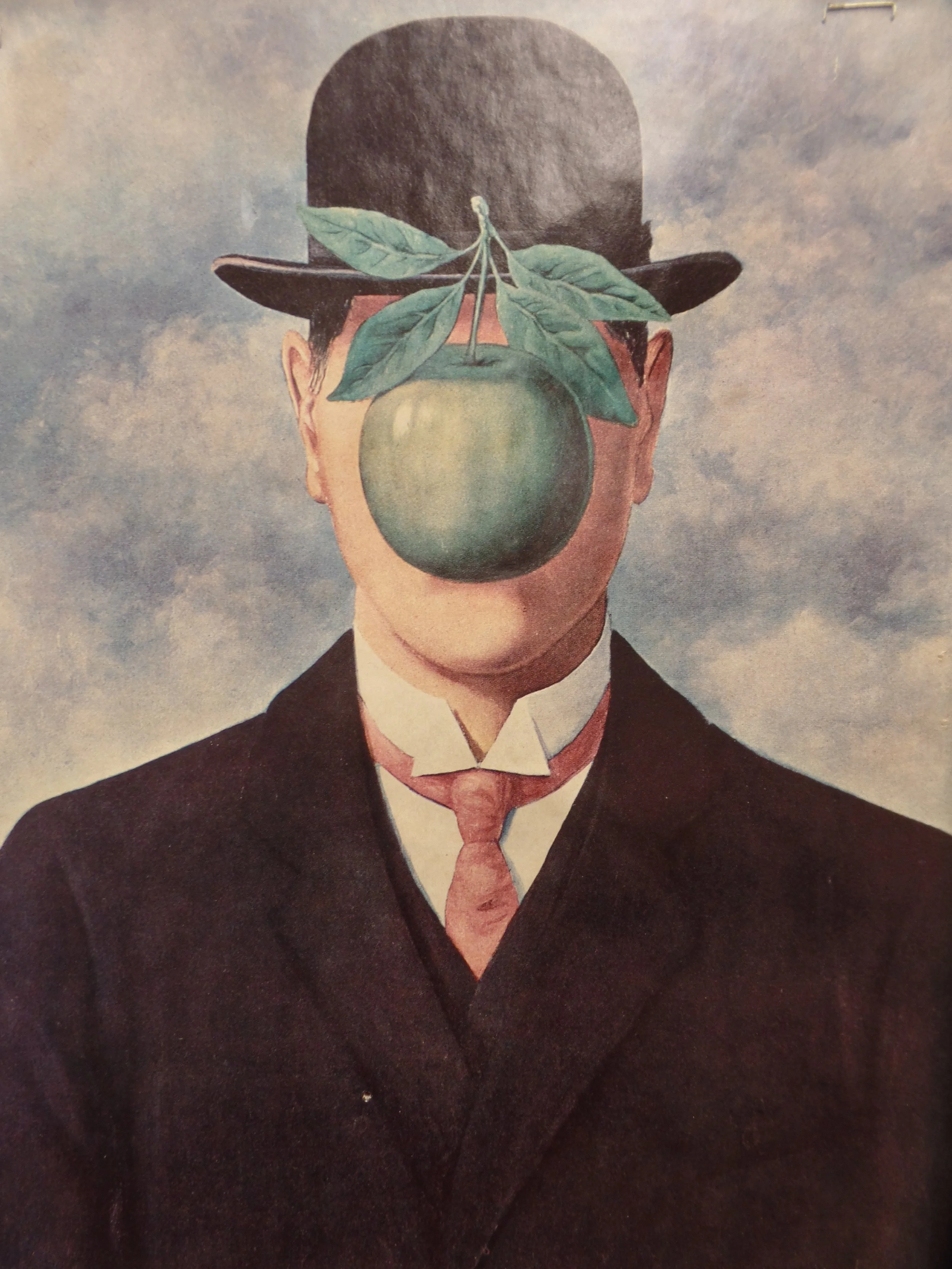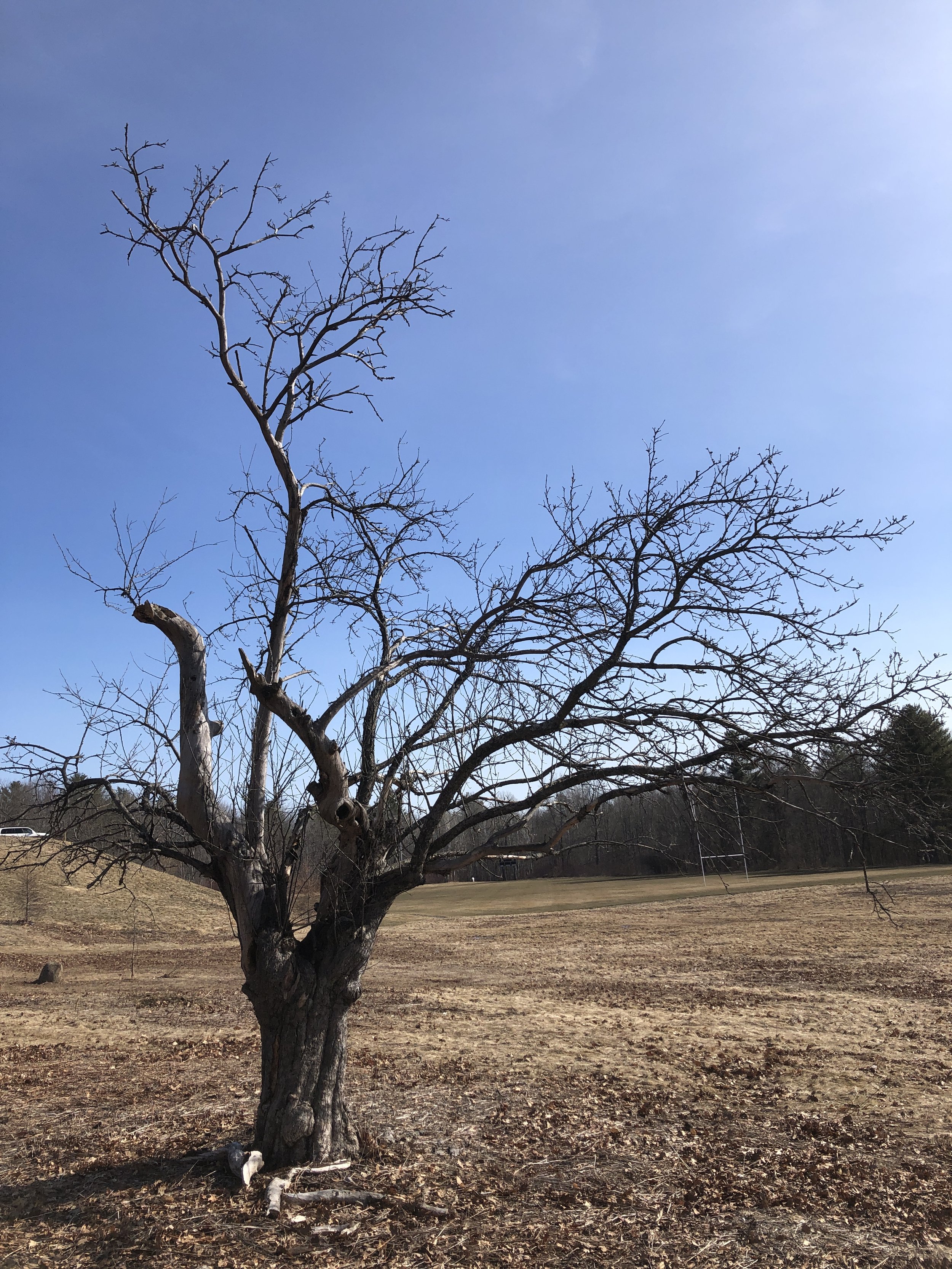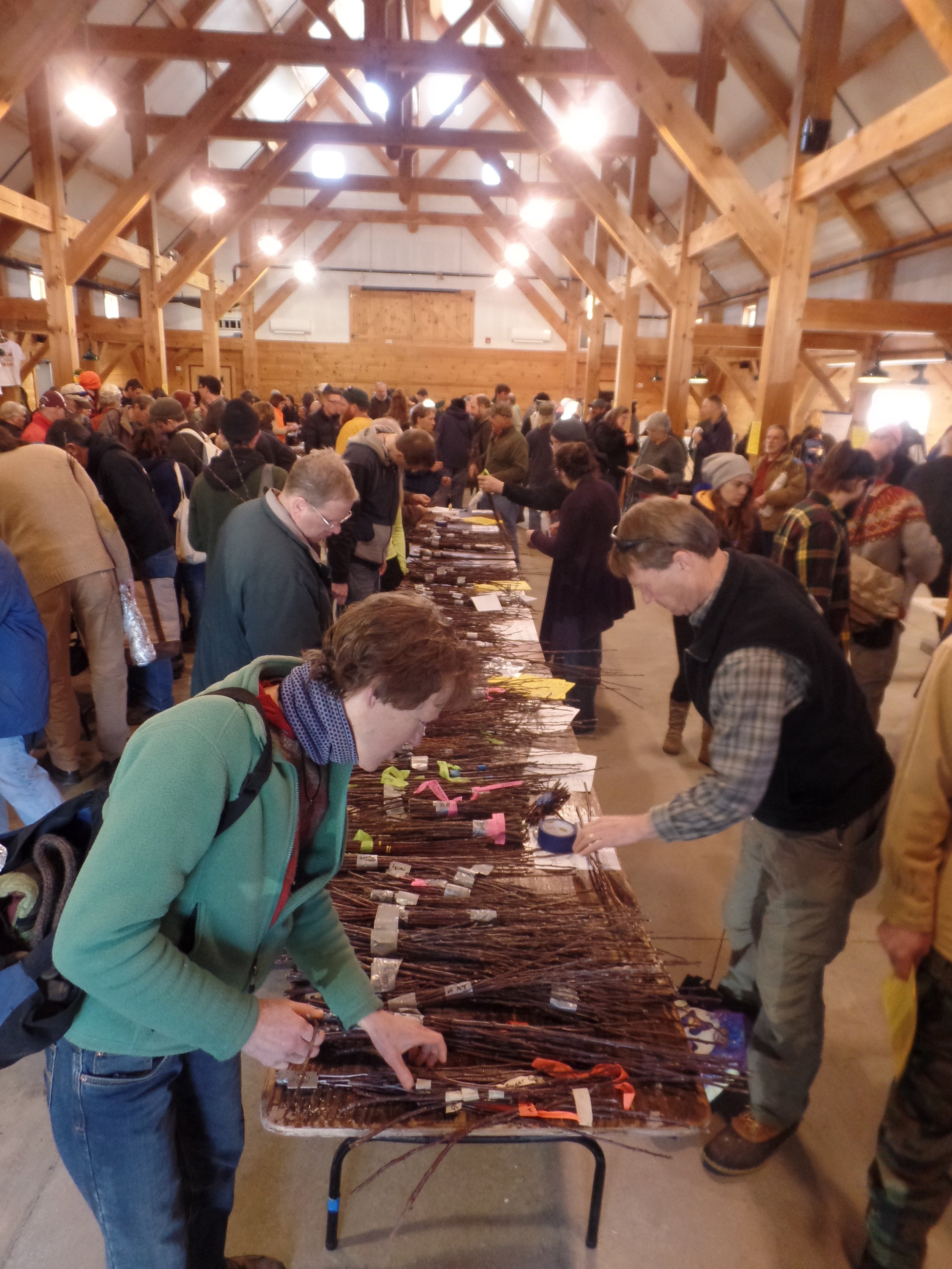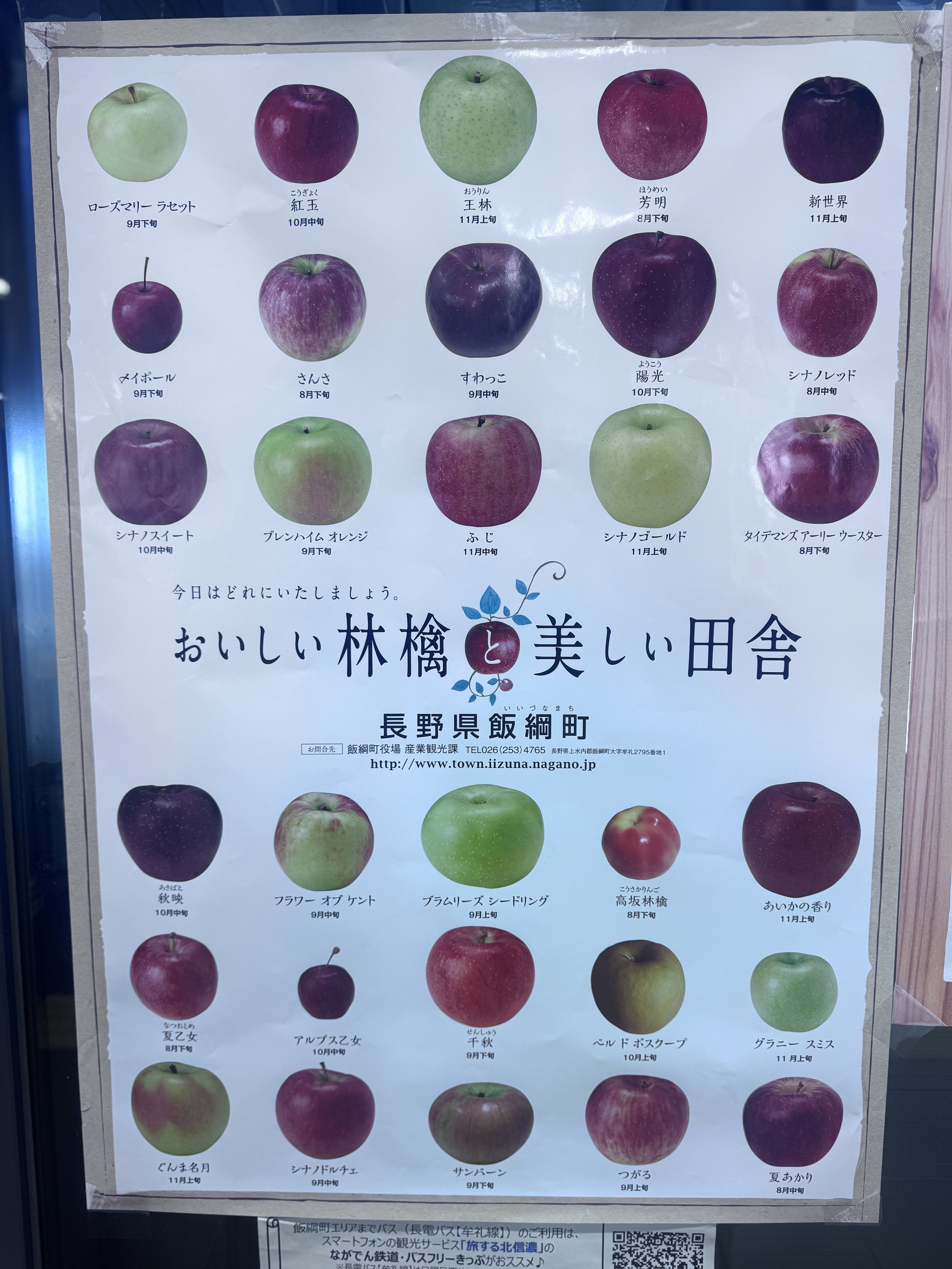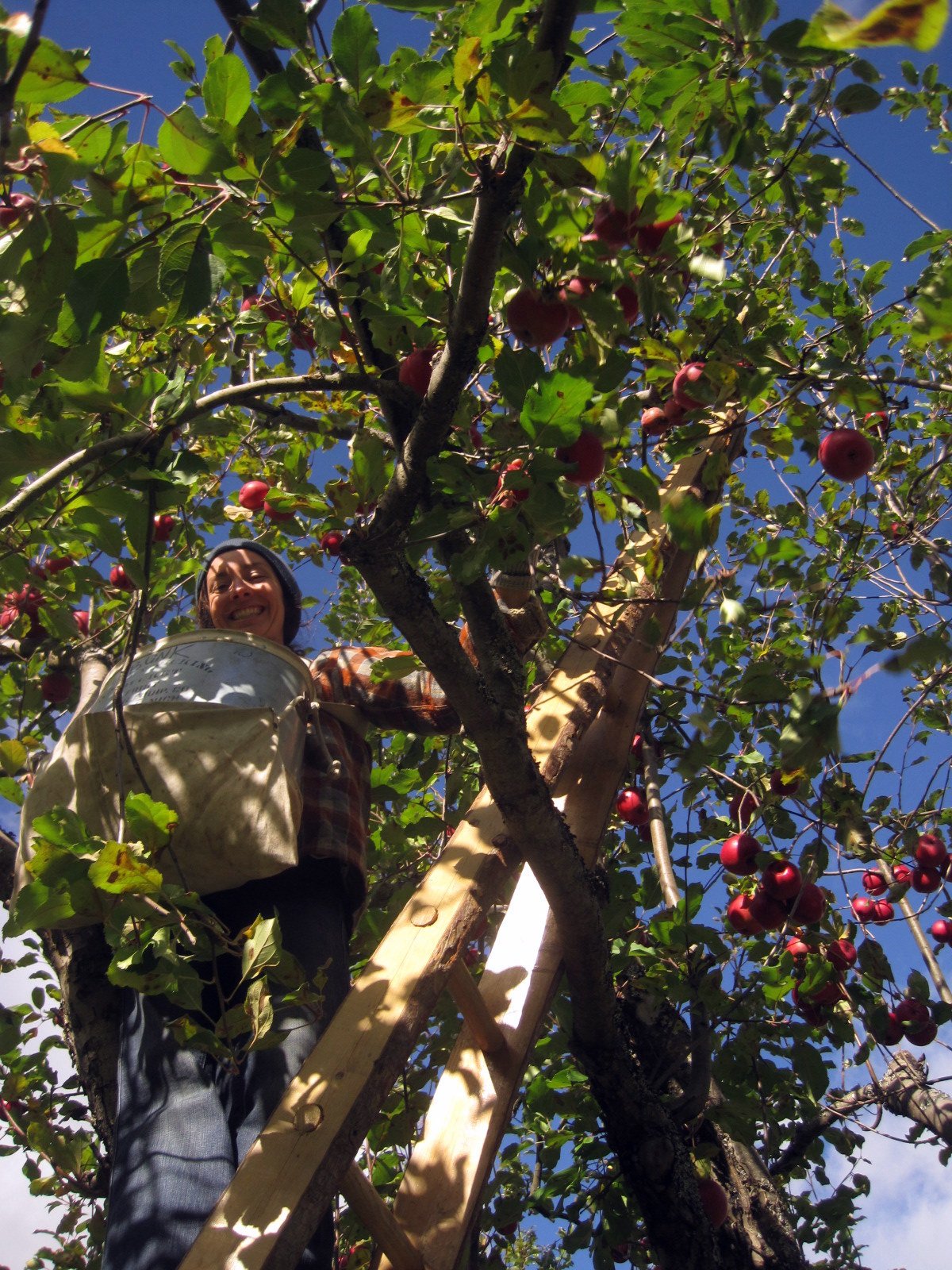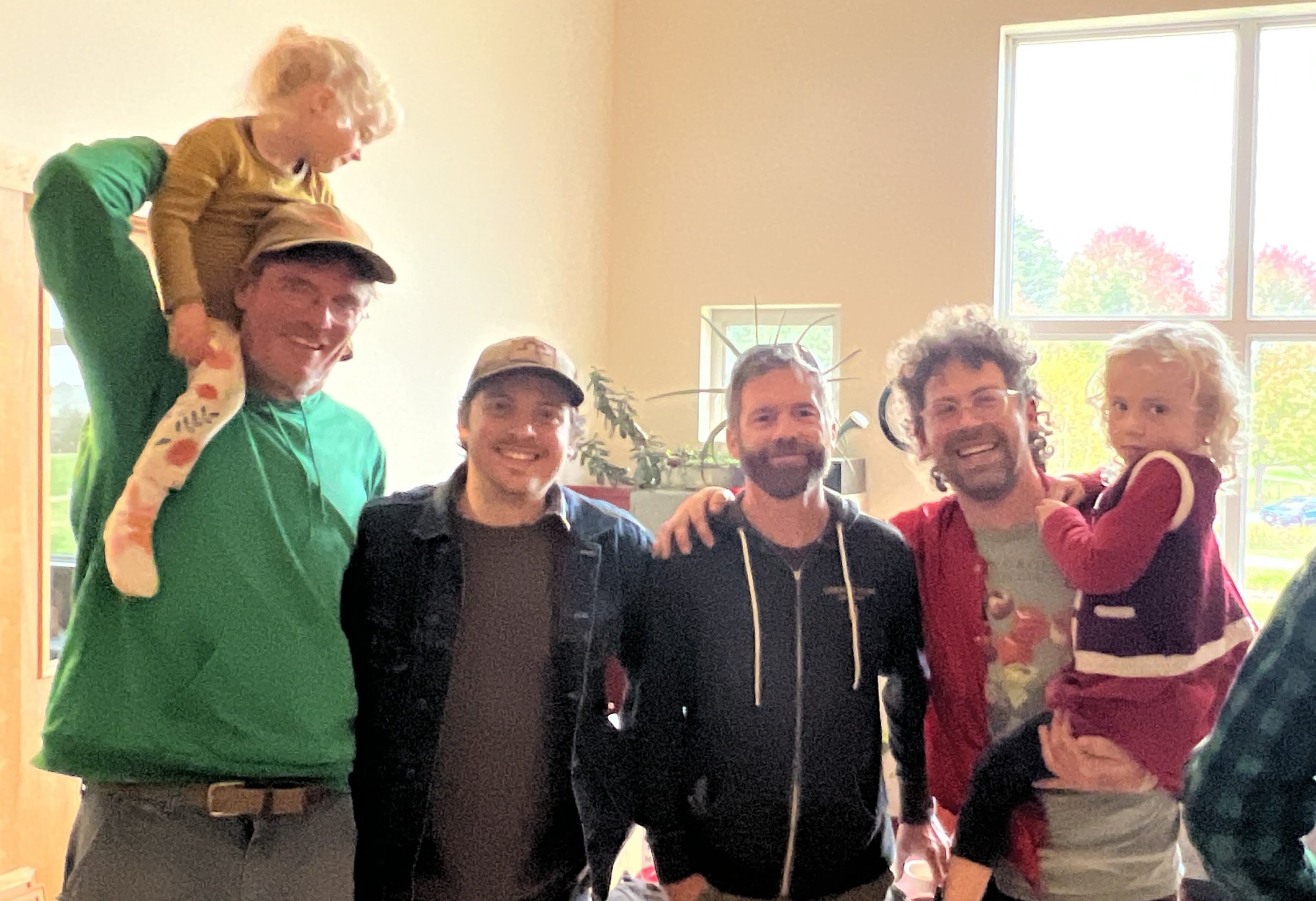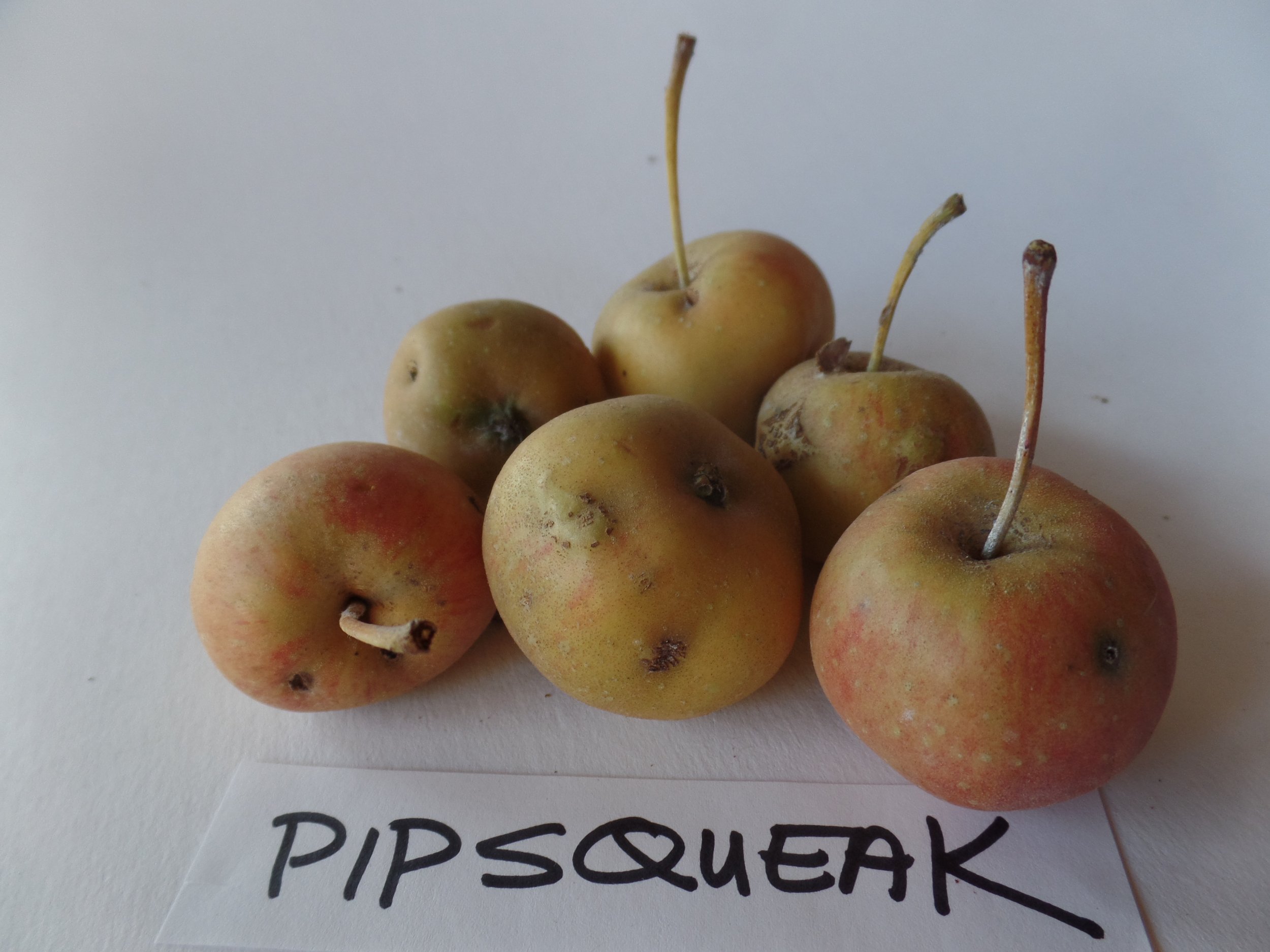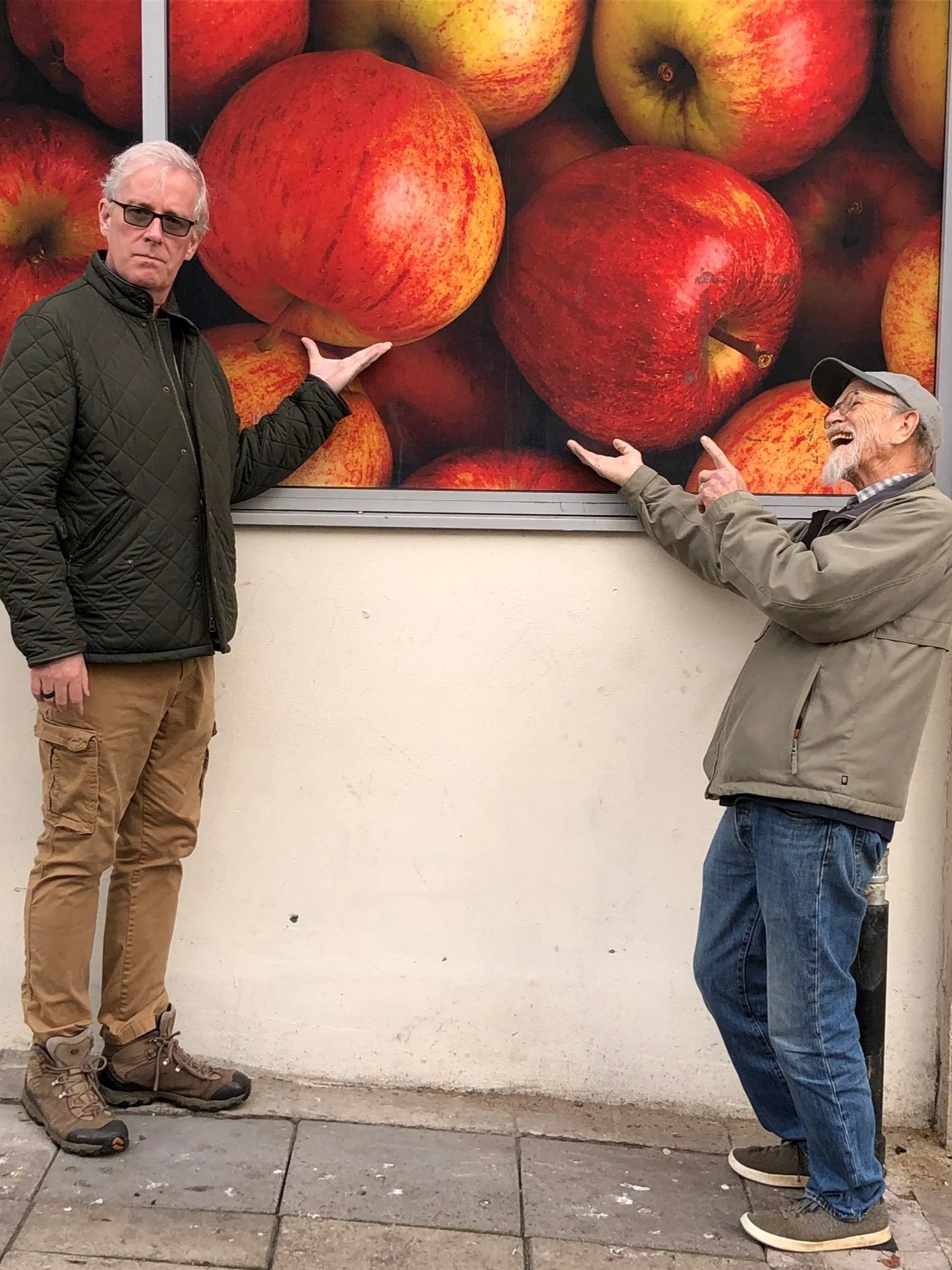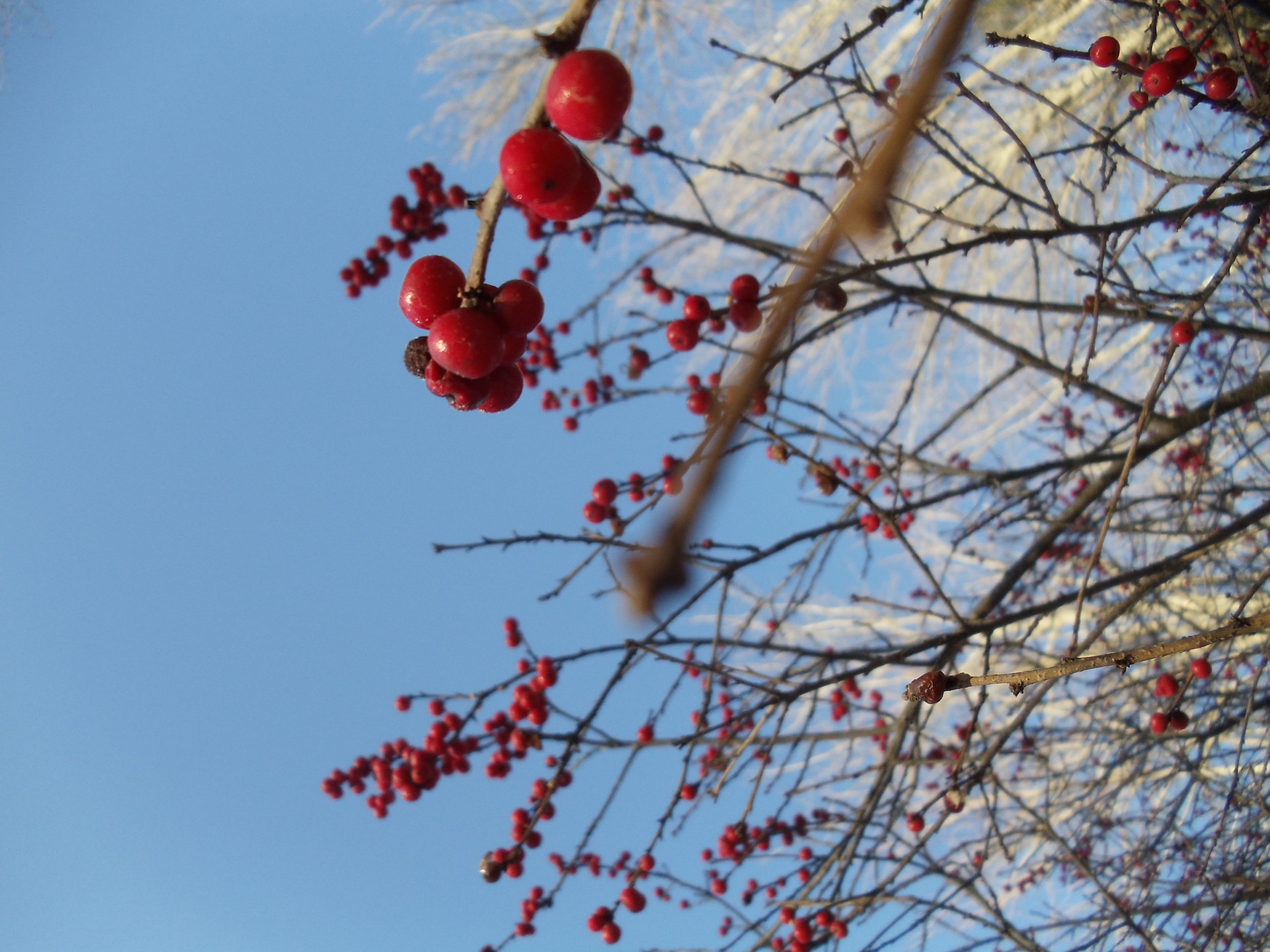Today in the orchard
Not much action in the warming-up department outdoors, but nice and warm in the shop with the wood stove crackling. Cammy and I sat by the stove and bench-grafted apple trees the past two days. We still have another day or so of grafting left. Much of what we’re grafting this year are back-ups of rare discoveries from around the East Coast, trials from friends’ breeding programs and some odds and ends. Much of the scionwood we’re working with is tiny, dry and challenging our best skills, but we’re forging ahead and hoping for at least a few takes of each cultivar. The rootstock we’re using is a combination of Bud 9 (dwarf) and standard seedlings (full size trees). Most of what we’ve selected to expand our own research collection will be top-worked (outdoor grafted onto existing trees) in mid-May. That’s still five weeks away. For now, grafting in the shop by the wood stove is the perfect way to spend a few of those cold, windy days in early April. We still have some pruning to do, but we’re coming down the home stretch. We should have the pruning done in the next week or so.

